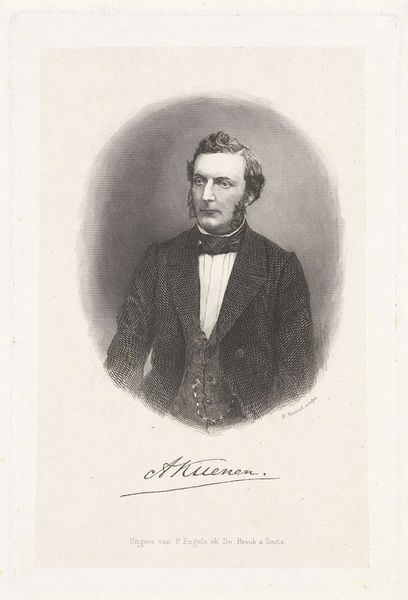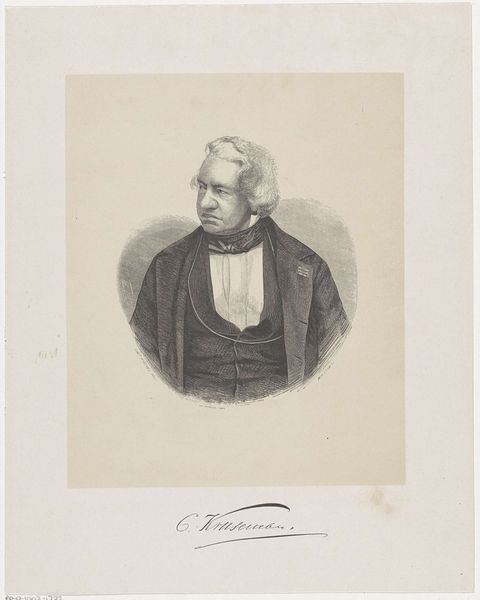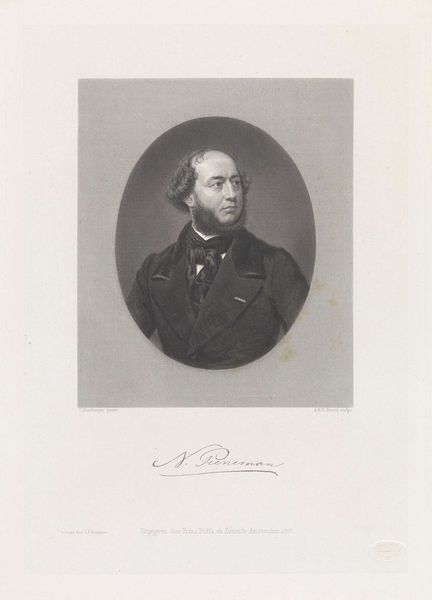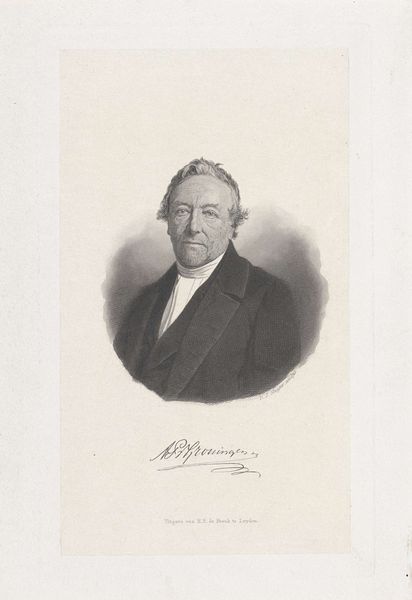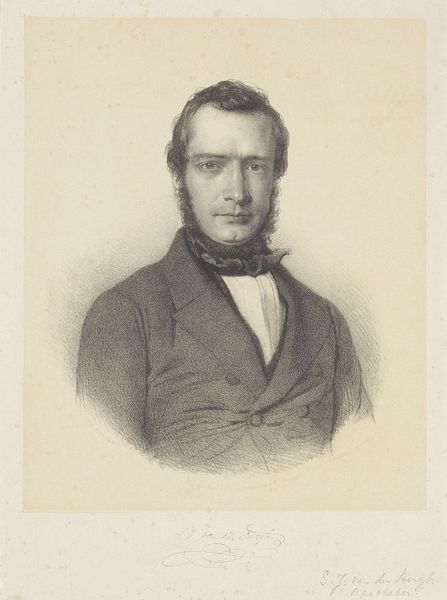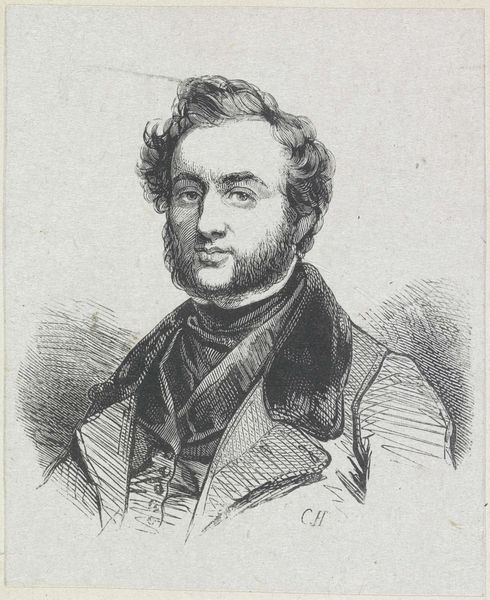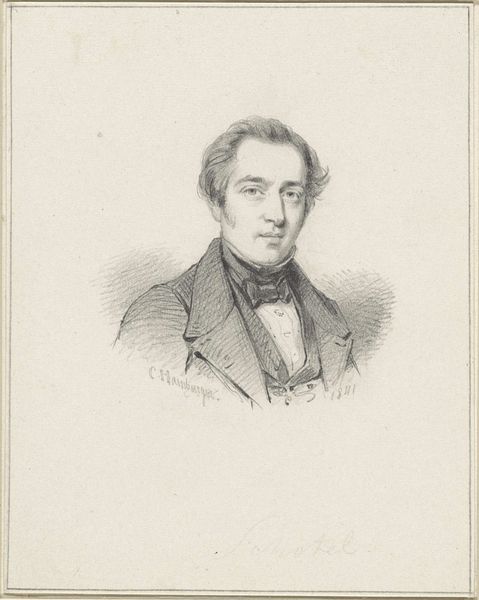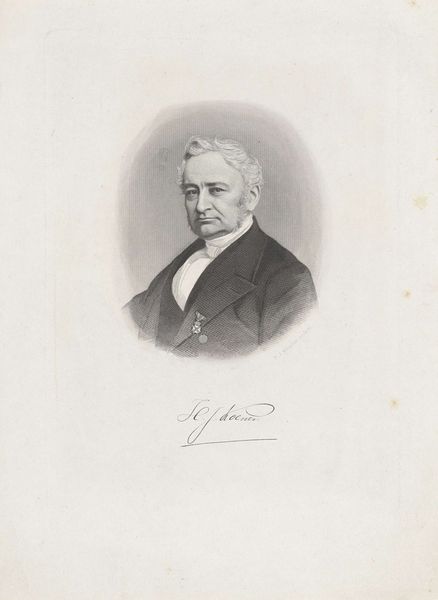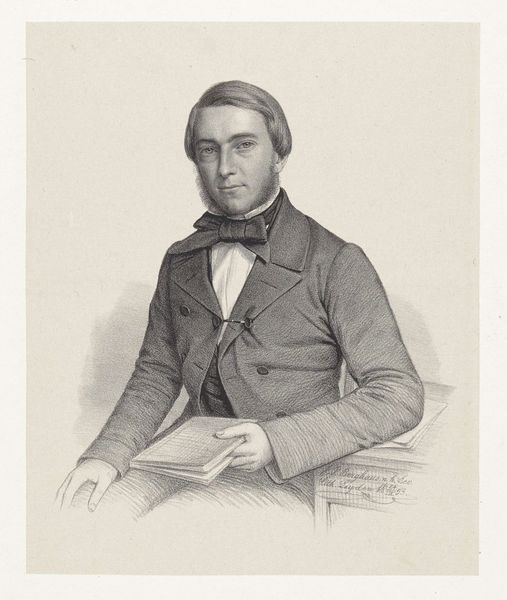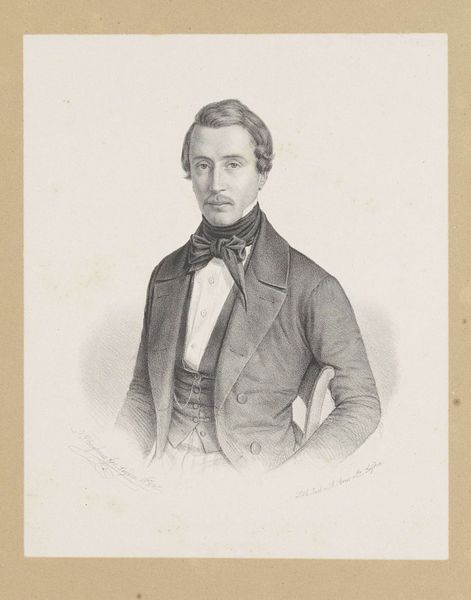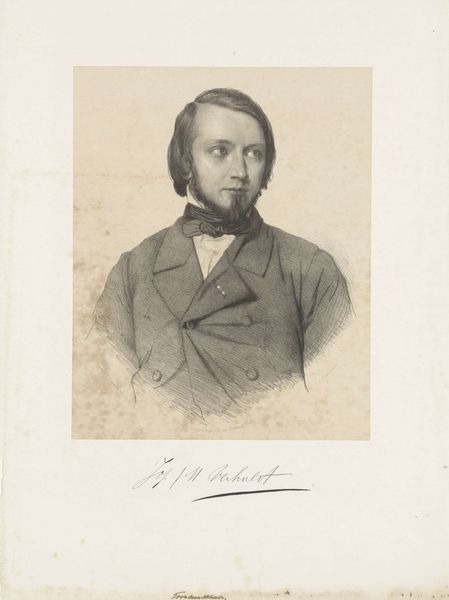
drawing, print, etching, engraving
#
portrait
#
drawing
# print
#
etching
#
charcoal drawing
#
portrait reference
#
portrait drawing
#
engraving
#
realism
Dimensions: height 275 mm, width 182 mm
Copyright: Rijks Museum: Open Domain
Editor: This is a portrait of Mr. Macaulay, created between 1842 and 1876 by Carel Christiaan Antony Last. It's a print, made with etching and engraving. The subject's gaze and posture, holding a quill, suggest a very deliberate and controlled presentation of status. What stands out to you about it? Curator: Well, first, consider the societal context. Portraiture in this era, especially through printmaking techniques like etching and engraving, was crucial in disseminating images of power and influence. How do you think the print medium itself affects the message of this portrait, compared to, say, an oil painting of the same subject? Editor: I guess that prints made it more accessible? The sitter is immortalized across many impressions... like an early form of mass media. Curator: Precisely. So, think about what kind of statement is being made by reproducing Mr. Macaulay’s image and making it accessible to a wider audience. It’s about constructing a public persona, about projecting authority and intellect. Notice his clothing, the careful detail in the rendering of his face – these elements contribute to that carefully constructed image. How might this image function in relation to Macaulay's professional or political life? Editor: It could serve as a form of political branding, right? Like those portraits of politicians used during campaigns. Even the subtle glance away seems calculated, projecting wisdom and thoughtfulness. Curator: Exactly! And consider where these images might be displayed – perhaps in public buildings, libraries, or even private homes. They subtly reinforce social hierarchies and celebrate intellectual and political elites. Also, do you think there are implications of how the image gets distributed, influencing perception or bias. Editor: I hadn't thought about it that way. It highlights how even seemingly straightforward portraits are deeply embedded in the social and political landscape of the time. I’m definitely seeing this piece with fresh eyes. Curator: And it showcases the impact that image distribution can have.
Comments
No comments
Be the first to comment and join the conversation on the ultimate creative platform.
